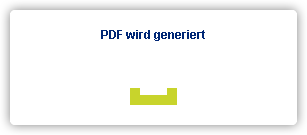Does the upload of freely accessible photographs to an external website require the copyright holder’s approval?
Uploading a copyright protected photograph on one’s website represents a violation of the exclusive right held by the copyright owner, even where the photograph in question had already been made publicly accessible on another website with the copyright owner’s consent. This is the conclusion reached by the European Court of Justice (“ECJ”) in its judgement of August 7, 2018 (Ref.: C-161/17) related to the interpretation of the term “making available to the public” within the meaning of Article 3 (1) of Directive 2001/29/EC (“Copyright Directive”), upon a respective request for a preliminary ruling handed in by the German Federal Supreme Court (“BGH”).
Circumstances of the Case
A German student included a photograph of the Spanish city of Cordoba that was publicly accessible on the internet in a presentation, which she afterwards uploaded to her school’s website. The photographer in question considered this a violation of his right of reproduction as well as his right to make the photograph available to the public, claiming that, with regard to the photograph, he had only granted a simple right of use to the operator of an online travel magazine portal. The photographer, by means of judicial proceedings initiated, inter alia, against the federal state in charge of supervising the school in question and employer of the responsible teachers, requested an order restraining the reproduction of the photograph as well as compensation of damages.
The BGH, which was ultimately involved in the legal dispute on the national level, decided to refer the question, whether the publication in question constituted an infringement of copyright, to the ECJ.
Decision of the ECJ
The ECJ decided that the inclusion of a work — which is freely accessible to all internet users on a third-party website with the copyright holder’s consent — on another person’s publicly accessible website constitutes a making available of that work to the public within the meaning of Article 3 (1) of the Copyright Directive, if the work is first copied onto a server and is uploaded from that server to that person’s own website.
Article 3 (1) of the Copyright Directive reads as follows:
“Member States shall provide authors with the exclusive right to authorize or prohibit any communication to the public of their works, by wire or wireless means, including the making available to the public of their works in such a way that members of the public may access them from a place and at a time individually chosen by them.”
According to the ECJ, the uploading must be treated as a “communication to the public” within the meaning of the Copyright Directive, since the protected work was made accessible to an indefinite number of potential recipients. In the ECJ’s judgment, in the present case the protected work was also reproduced using a technical process, which differs from that previously used or otherwise reproduced for a “new public”, i.e. for a new public, which the copyright owner had not thought of when permitting the original public reproduction of his work. In the Court’s view, the fact that in the present case both, the original reproduction of the work on one website and its subsequent reproduction on another website took place using the same technical procedure does not change this. The Court argues that in the case at hand, the photographer as the copyright owner had only thought of the users of the online travel magazine portal when agreeing to use his work, but not of the users of the website on which the work was posted later without the copyright owner’s consent.
This means that posting freely accessible photographs on another website continues to be permissible with the copyright owner’s (explicit/specific) consent only. In general, making photographs accessible to a new public is not covered by consent previously granted by the copyright owner.
Practical Recommendations
The argumentation used in ECJ judgments on hyperlinks, according to which the inclusion of links referring to another website does not constitute a communication to a new public, cannot be applied to the present case. Hyperlinks contribute to the sound operation of the internet by enabling the dissemination of information on this network, which is characterized by the availability of immense amounts of information (judgement of September 8, 2016, GS Media, C-160/15, EU:C:2016:644, paragraph 45). Posting a copyright-protected work on a website without the consent of the copyright owner is fundamentally different from posting hyperlinks: Firstly, it does not contribute to the sound operation of the internet to the same extent as hyperlinks. Secondly, if the work were to be deleted from the original website on which it was initially communicated, this would cause any hyperlink to lead to nowhere, whereas a work posted on another website would remain available.



